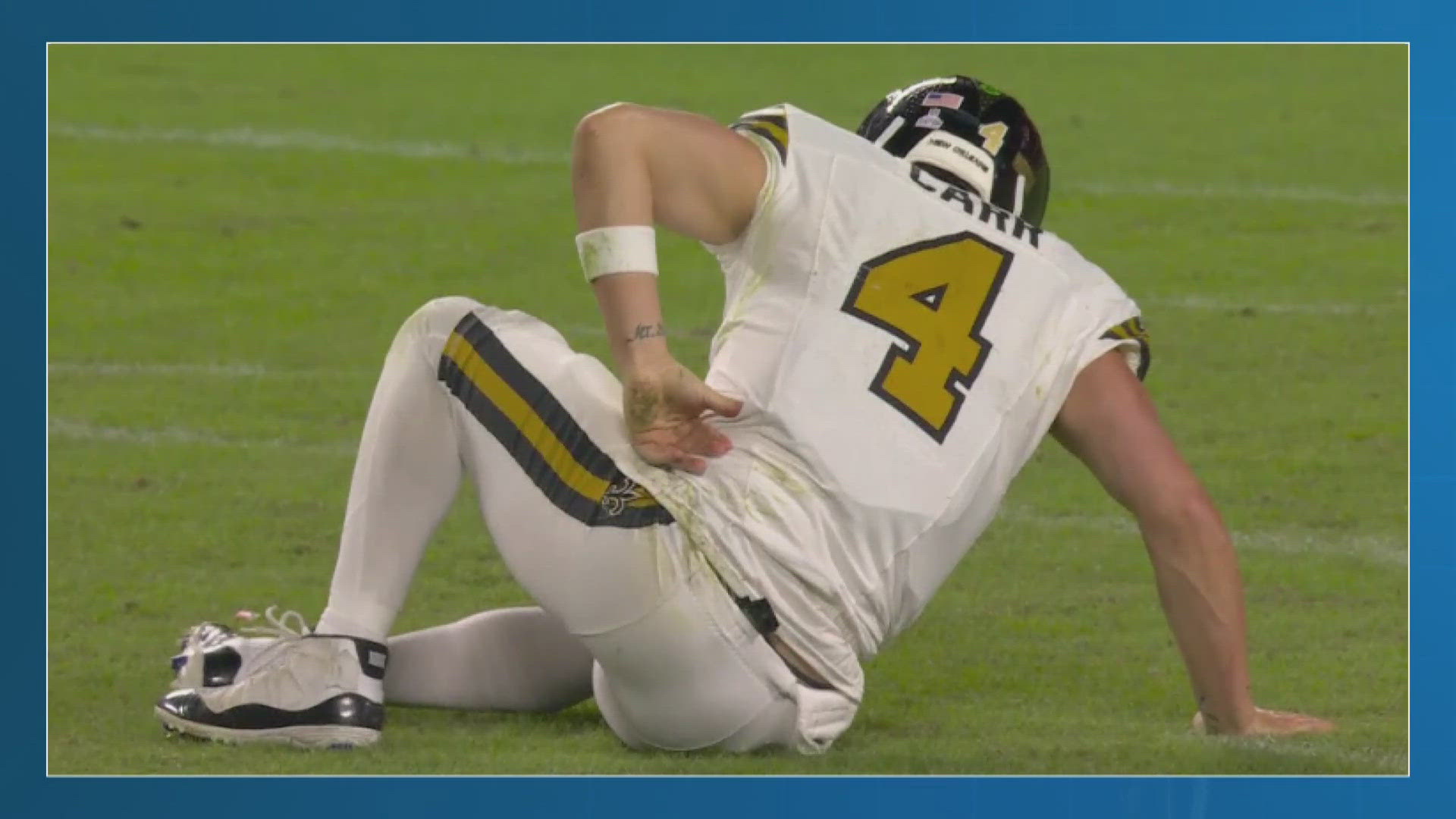NEW ORLEANS — Saints’ fans may remember 10 years ago, quarterback Drew Brees sat out two weeks of training camp from an oblique muscle strain.
He said his style of throwing suffered, and he developed bad habits from playing before he fully healed.
Now Derek Carr has a similar injury.
So, what could his recovery take.
An MRI Tuesday confirmed that Saints quarterback Derek Carr suffered an injury in his oblique muscles.
Those are not what in-shape people refer to as having a six pack, in the front. Those are the ones on each side of the abdomen, responsible for rotating, stabilizing the core, breathing, and side bending.
“I couldn't do what I needed to do in the simplest form. I asked if there was anything we could do about it, and there was not enough time to do that,” Derek Carr said in a press conference after the Saints lost to the Chiefs.
In baseball, it's the most commonly injured ab muscle, because it's activated when hitting and throwing. All that's being said about Carr is that he is out indefinitely.
“It can take one to two percent of discomfort on a very precise throw at that level, that can lead to errors, that can lead to further injury, can lead to interception,” noted Dr. Jacques Courseault, the Founder and Medical Director of The Fascia Institute and Treatment Center in Metairie.
So, we turned to sports medicine and physical rehab physician Dr. Courseault for some insight. He has not treated Carr, but at his clinic, treats muscle injuries in pro athletes from around the U.S.
“In general, abdominal injuries do heal well when it's just a musculoskeletal injury, or an injury to the muscle. That's usually a one to two week turn around,” he explained.
But Carr is not saying what the grade, or severity of the oblique injury is.
“When it comes to the high impact forces in sports, like football, rugby, wrestling, it may take a little bit longer, but the abdominal muscles are surprisingly resilient, and, in general, they heal faster than other muscles.”
Dr. Courseault uses a highly specialized technique to see on ultrasound, if the injury is really just in the fascia surrounding the muscles, rather than inside the muscle. With an in-office injection called hydrodissection to injuries in the fascia, he's returning athletes thought to have muscle injuries, back to the field much faster.
“A higher-level quarterback, or pitcher who needs to be really precise with how they deliver a ball, you do want to make sure you're pretty close to 100 percent before you return for accuracy’s sake, and precision’s sake,” said Dr. Courseault.
For now, Carr has not said how he's being treated.
► Get breaking news from your neighborhood delivered directly to you by downloading the new FREE WWL-TV News app now in the IOS App Store or Google Play.

